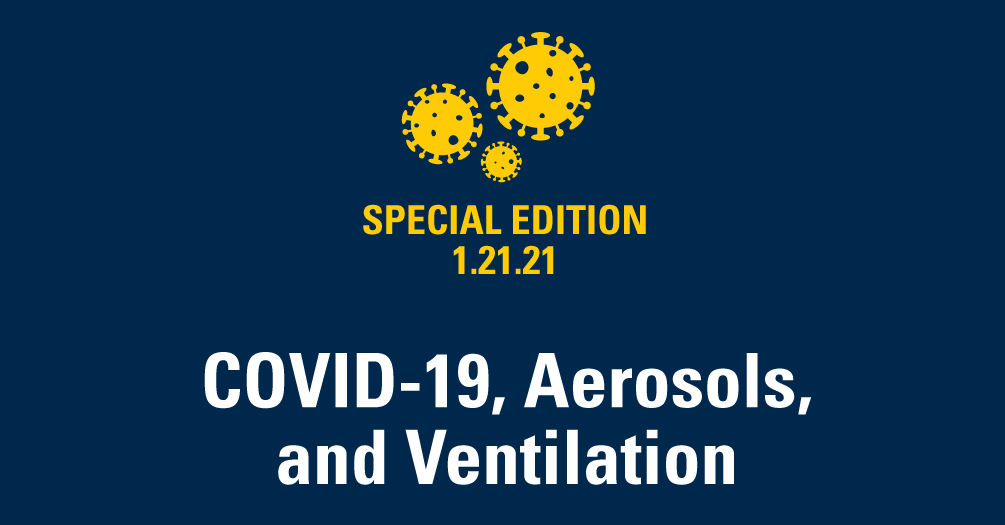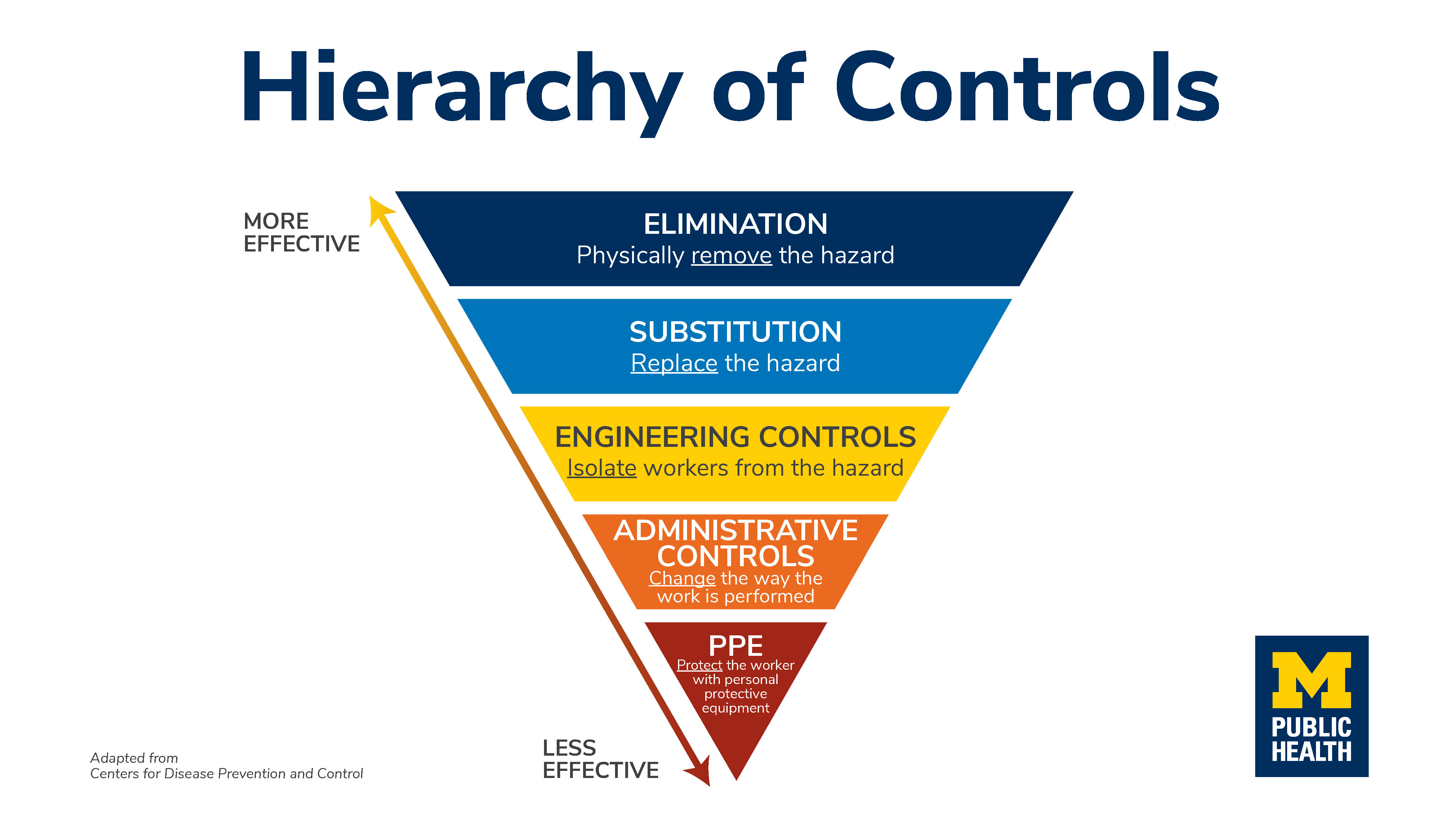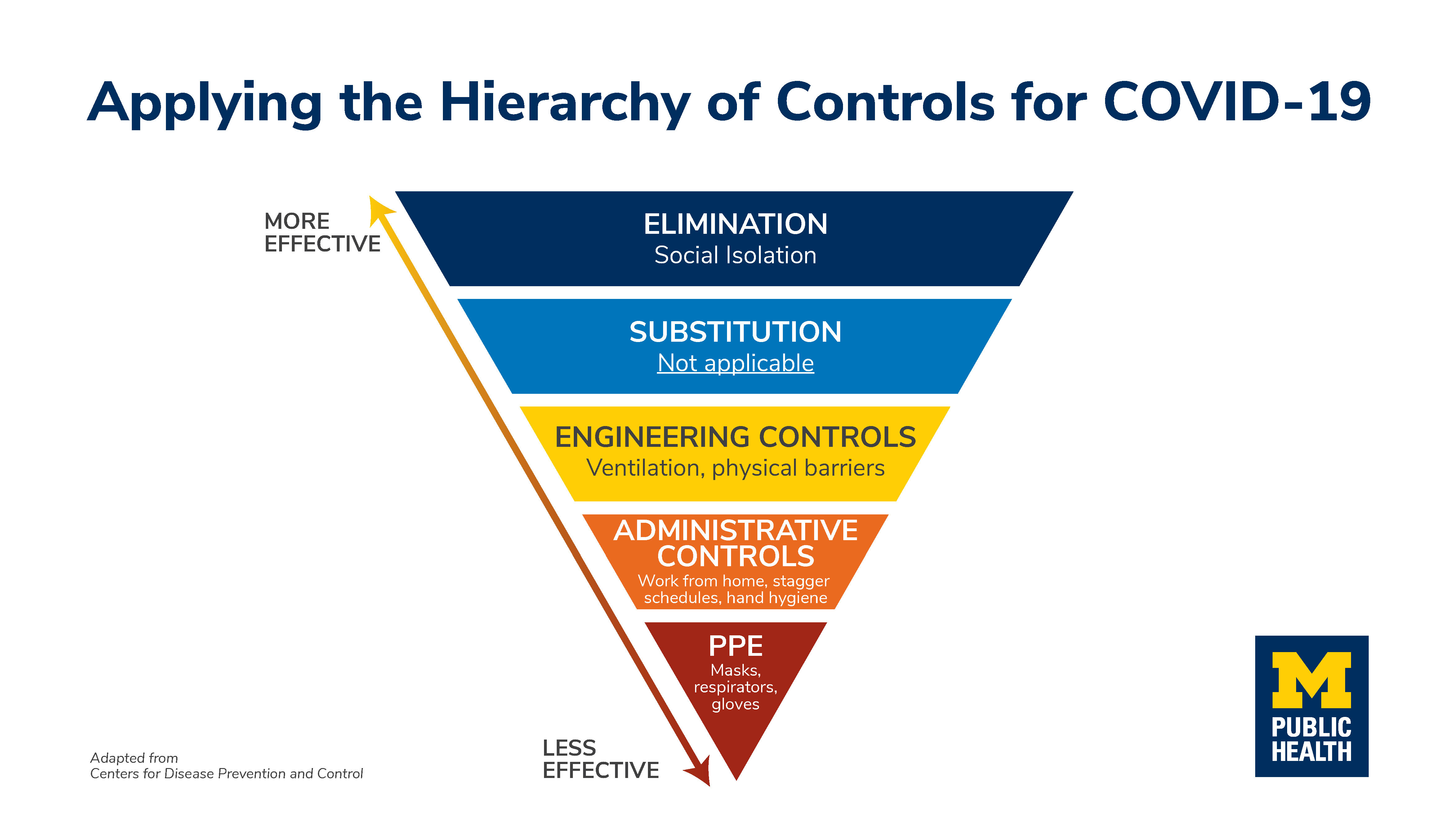COVID-19, Aerosols, and Ventilation

As we continue through these winter months, we find ourselves inside for longer periods of time. How can we avoid aerosolized droplets becoming a problem for disease transmission in our public buildings? We have many layers to consider for minimizing risk, but in many ways it starts with the ventilation systems in these buildings. To learn more about the connection between air ventilation and the COVID-19 pandemic, we spoke with Dr. Aurora Le, assistant professor of Environmental Health Sciences at the School of Public Health and an expert on biocontainment and biosafety procedures.
According to the Centers for Disease Control and Prevention (CDC) and many other public health experts, close contact with another person, and specifically through the spread of respiratory droplets is considered the primary cause of infection from COVID-19. However, mounting evidence points to aerosolized droplets—much smaller droplets that remain in the air, sometimes for hours—as a concerning source of transmission for coronavirus, especially in what are known as superspreader events, where many people are infected by just a few or even one known source.
Listen to "COVID-19, Aerosols, and Ventilation 1.21.2021" on Spreaker.
|
Subscribe and listen to Population Healthy on Apple Podcasts, Spotify, Google Podcasts, iHeartRadio, YouTube or wherever you listen to podcasts! Be sure to follow us at @umichsph on Twitter, Instagram, and Facebook, so you can share your perspectives on the issues we discussed, learn more from Michigan Public Health experts, and share episodes of the podcast with your friends on social media. |
0:00:04 Narrator: According to the CDC and many other public health experts, close contact through larger respiratory droplets is considered the primary cause of infection from COVID-19. But, mounting evidence points to aerosolized droplets, much smaller droplets that hang out in the air sometimes for hours, as a concerning source of transmission for Coronavirus, especially in what are known as super-spreader events where many people are infected by just a few or even one known source. As the weather gets colder and we find ourselves inside for longer periods of time, how can we avoid aerosolized droplets becoming a problem for disease transmission in our public buildings? We have many layers to consider for minimizing risk, but in many ways, it starts with the ventilation systems in these buildings.
Hello and welcome to Population Healthy, a podcast from the University of Michigan School of Public Health. This episode is part of a series of special editions of our podcast, focusing on the ongoing Coronavirus pandemic. To learn more about the connection between air ventilation and the COVID-19 pandemic, we spoke with Aurora Le, an assistant professor of Environmental Health Sciences at the University of Michigan School of Public Health. She's an expert on bio-containment and bio-safety procedures.
0:01:20 Le: We know that COVID-19, like many other respiratory disease, is primarily spread through the droplet nuclei, which depending on the size of the droplets, the larger generally fall and settle within a few feet of a source due to gravity, whereas the smaller droplets can remain suspended in the air and potentially travel longer distances. Air ventilation or air circulation refers to the distribution of fresh air into a room or other indoor space.
Industrial Hygienists and others who work in the field of occupational safety and health more often use the term ventilation. Air exchange rates or air changes per hour refers to the measure of air volume added or removed from a space in one hour divided by the volume of that space. Specifically in the case of COVID-19, aerosol transmission remains possible under the right conditions. And some examples of this are a source generating a high enough infection dose such as a person sneezing, coughing, talking, singing or spitting. Second is nothing arresting or blocking that source, such as a mask or facial covering, plexiglass shield or other physical barriers. And the last is environmental conditions that are really conducive to viral survival, such as low temperature and humidity and low air changes per hour in a space.
0:02:48 Narrator: There are several things that have to happen for COVID-19 transmission to occur, but likewise aren't there several opportunities to prevent it?
0:02:55 Le: Assessing your HVAC equipment for disease mitigation can be very complicated, but of course, it's also important and worth going through the process. I generally wouldn't recommend anyone trying to assess an HVAC system themselves. Please refer to a trained industrial hygienist or trained ventilation specialists as they can likely not only provide set-up support, but can also run tests to ensure that your system is working properly.
First, it's really important to focus not just on the square footage of a room or a space, but the overall volume. Higher ceilings can increase the volume of a space naturally and smaller spaces have less volume to diffuse germs and circulate air. Then you wanna understand your air handling equipment. What type of HVAC system do you have, what's it's capacity, and how does it work and function properly? Some are single zone systems and some are multi-zone. Some have constant volume supply of air and others have variable volume systems. You'll also want to know if your system uses heat pumps that will affect airflow and humidity. Your manufacturer data and floor plans can also provide a beginners blueprint for answering these questions.
When you're operating a big system like this, you also wanna take into the account practical things like your budget, your staff training to operate it properly as well. Field electricity and maintenance costs can also be significant with HVAC systems, so the proper timing of HVAC maintenance, filter replacements, and just installing the filter properly is really crucial. You don't want your system to be cost-prohibitive, but you also wanna be able to supply your building with fresh, healthy air.
Second, once you have a sense of the dimensions of your space and the capabilities of your HVAC system, you can start focusing on airflow - how often the air is being completely replaced in each space. So different spaces do generally have different recommendations depending on the type of room, and these are general and not specific to COVID. For example, bedrooms, we generally seem to have five to six air exchanges per hour, kitchen 7 to 8, and laundry rooms 8 to 9. These are about the size of the room compared to the potential air quality hazards being produced in those spaces. But in general, most professionals within the industrial hygiene field suggest that air flow gets at least six complete air exchanges per hour in public spaces such as school buildings, university buildings, with three being the bare minimum for SARS COV 2.
You also wanna understand the whole picture of air circulation from vents to cold air returns, to make sure you don't have any blockages in the ductwork, nor outside in the spaces like furniture or plants or other objects placed in front of vents or returns that can really obstruct airflow. Airflow through vents and returns can be tested by professionals and ductwork, of course, can be cleaned. And you want to know if you have natural ventilation in your space, like doors and windows that are frequently open. If you have movement created by special equipment like hoods in labs or kitchens, or even downdraft tables. In general, the goal is to ensure that your HVAC system is aligned properly with your space.
Temperature and humidity, you're crucial and disease mitigation and must be taken into account. Your local climate will obviously influence your ability to adjust the humidity in your building. And here, it's important to understand the relationship between respiratory infectious diseases and humidity. Cold temperatures and low humidity create conditions in which viruses can stay viable in the environment for longer periods of time. That is to say, generally speaking, Coronaviruses survive better in colder, dryer, outdoor environments with low levels of ultraviolet light. When the air is humid, generally aerosols become larger and therefore heavier. They fall out of the air and hit surfaces more quickly, rather than staying suspended in the air for longer periods of time. As you look to maintain humidity in the winter months, you have to balance comfort and aerosol reduction with mold growth. Once you exceed a relative humidity of greater than 60%, you also increase the likelihood of mold growth, which obviously has negative impacts on human health. You can purchase a quality hydrometer at a hardware store or online for well under 20 dollars and adjust your HVAC system accordingly. If your system doesn't include humidification options, then you'll want to have some separate humidifiers operating in the winter. Another consideration with conditioning is how well your system is mixing fresh air coming from the outside with air that's getting recirculated from the inside. Outside air might be fresher, but it also generally needs to be conditioned for temperature and humidity, which will add expenses to your operation.
0:07:58 Le: Generally speaking, most buildings with a central air conditioning system are recirculating air from the inside rather than drawing fresh air from the outside. Again, look around at the specific locations in the building where the exhaust vents from the lab or kitchens might be drawing air from the outside. With a system that uses air recirculation, you can safely filter the air to mitigate the presence of airborne infectious diseases like coronaviruses, but it is essential that the people who manage the building know what type of ventilation systems are in place, what kinds of air filtration systems are being used, and how to ensure that the systems function properly. Increasing air filtration does put an additional strain on the motor that is trying to move the air through your system, and of course, you don't wanna diminish that optimal air flow throughout your building. So just be careful with filtration and pay close attention to proper care and maintenance. Beyond that, we really just can't make blanket statements though, for all buildings related to temperature, humidity and filtration, so make sure you take into consideration what is structurally there, how the building is being used, and what your outdoor environment is like in each season and so on.
0:09:10 Narrator: Even the best laid building management plans can suffer from user error and unforeseen challenges. How can we best understand the various activities going on in the building and how does that impact ventilation?
0:09:21 Le: Human activity and building capacity are major considerations for ventilation needs. If you have a high volume of people doing physical activities like exercising in a gym or singing or playing wind instruments, because you have an orchestra practice, you're potentially increasing humidity and the force and volume which people are expelling these aerosolized droplets. Any high volume of human activity will increase the chances of the presence of respiratory infectious disease spread. Additionally, new and recently remodeled buildings often require extra ventilation because new building materials off gas manufacturing chemicals like formaldehyde, for example, at higher rates. Furthermore, any building using large amounts of cleaning products regularly, should implement extra ventilation regardless of the number of people in the building present to maintain healthy air quality. Viral survival does go down over time, so if your space is unoccupied overnight, it does give you an opportunity to fully cycle the air without anyone present. You might reduce air flow at that point to reduce costs, but we do recommend leaving ventilation systems running overnight at some level.
0:10:40 Le: Of course, user behavior is a big factor in all of this. A great system designed to reduce exposure but does not run properly, won’t help as much as it could. If you don't want windows or doors to be propped open, you should communicate these policies clearly to your building occupants. Maybe put stickers on windows and signs by doors. Is someone resetting the thermostats and fans to settings that are not ideal? Has someone placed a bookshelf or a large plant in front of a vent return? These are all part of a proper functioning HVAC system. We recommend running the exhaust fans and bathrooms continuously so that individual users are not responsible for turning them on and off with the lights in those spaces.
I also wanna stress that a good system that functions properly, even if it's not brand new, can move air through your spaces effectively. You can spend a lot of money on new systems, new filters and other equipment, and it can work really well, but if it's not operated properly, it might be less effective than the system you replaced. A basic system running well can be better than an expansive complex system being run incorrectly. And most importantly, air circulation, exchange and filtration are just one part of what we call the hierarchy of controls - the graph might have seen of stacked practices that work together to reduce disease transmission.
Ventilation is part of the engineering controls we can implement in a space to protect us from disease, along with other things like plexiglass shields and other barriers, but you also have to keep an eye on public surveillance and how much COVID-19 is present in your community before you even consider entering a public space, and when you do, you wanna use PPE like a mask, and you wanna use administrative controls like social distancing or staggering who is in the building when. Air ventilation can certainly help us reduce the transmission of COVID-19, but it should not be considered the first line of defense. In the field of industrial hygiene, we don't like to say that risks are eliminated, rather we say that risk could be minimized and reduced. So there is no such thing as an entirely safe space, but you can do a lot within your building and with the behavior of the people in it, to create safer environments for everyone there.
0:13:12 Narrator: This has been a special edition of Population Healthy, a podcast from the University of Michigan School of Public Health. During the ongoing coronavirus pandemic, we’ll work to bring you analysis from our community of experts to help you understand what this public health crisis means for you. To stay up-to-date in between special edition episodes, be sure to check out our website publichealth.umich.edu, subscribe to our Population Healthy newsletter at publichealth.umich.edu/news/newsletter and follow us on Twitter, Instagram, and Facebook @umichsph.
In This Episode
Aurora Le
Assistant Professor of Environmental Health Sciences
Dr. Le was assistant professor of Environmental Health Sciences at the University of Michigan School of Public Health. She is a Certified Safety Professional (CSP) and Certified in Public Health (CPH). Dr. Le’s interdisciplinary research is centered around highly infectious disease mitigation and management, with a focus on training, education, prevention, and preparedness. She is also interested in the intersections between health behavior, occupational safety, and industrial hygiene, as well as psychosocial factors that influence occupational health.


